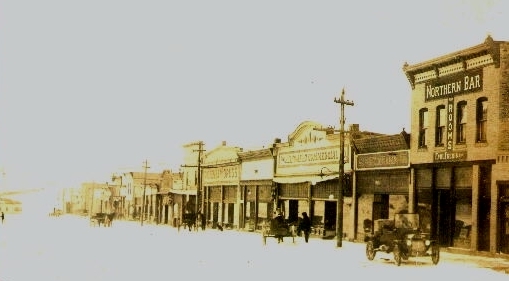
Superior, Wyoming, approx. 1913.
See Bird's Eye view at bottom of page. The Northern Bar,
pictured above, was a part of the Hotel Grand containing a few rooms for travelers.
With the decline of production at other Union Pacific Coal
Company mines such as Carbon, Hanna, and Almy, it became necessary for the Company to
find additional sources of coals. The Company organized a subsidiary the Superior Coal Company.
Superior Mine "C" opened in 1903, followed by "A" in
1905, "B" and "D" in 1906, and "E" in 1910. Thus,
Superior, in Horse Thief Canyon 23 miles northeast of Rock Springs, like many other towns in Sweetwater County
was economically dependent upon coal mining for the UPRR. Prior to the depression,
the Superior area, consisting of Superior, South Superior and adjcent Dog Town,
boasted a population of approximately 3,000 and the largest coal mine
west of the Mississippi. Both Superior and South Superior were incorporated by 1911. South Superior when it was
settled consisted was a tent city of ove 100 tents. The color of the tents gave it the local name of
"White City." Another small town in the area, Copenhagen took its name from a brand of chewing
tobacco favored by the miners.
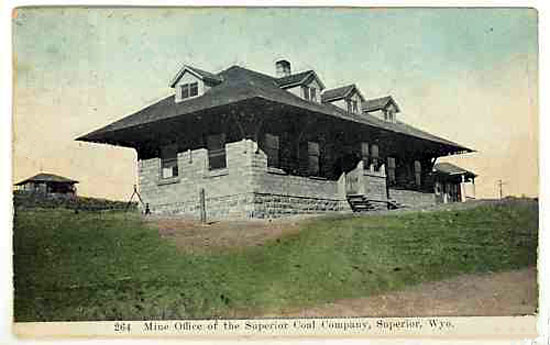
Superior Coal Company Office, 1912
<
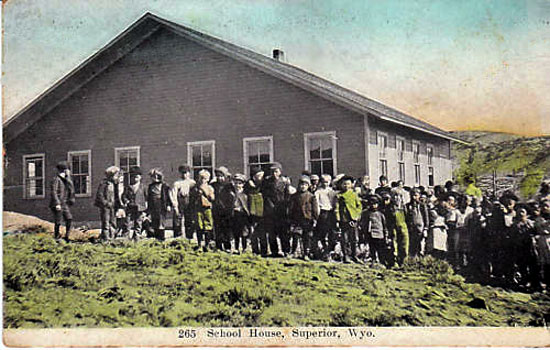
Superior School, 1912
<
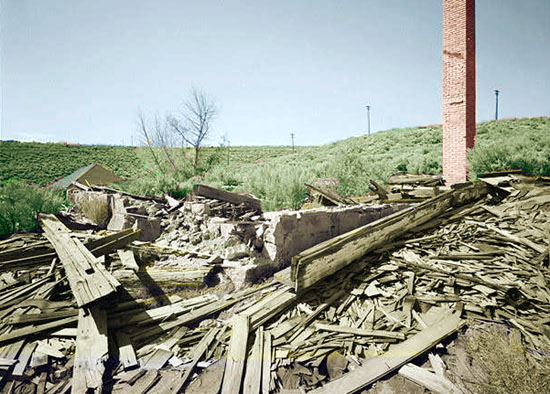
Remains of the Superior Schoolhouse.
<
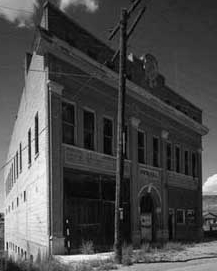 Superior Mine Workers Temple.
Superior Mine Workers Temple.
The Union Hall, pictured to the right, constructed by the six locals of the
United Mines Workers, featured a dance hall and stage
on the second floor, as well as a saloon, grocery store,
bowling hall and doctor's and dentist's office. Additionally, the Episcopal, Mormon, and
Catholic Churches held services in the building. Later, the Catholics constructed their
own church building in South Superior. Pictured below is Western Meats which burned
on December 28, 1913 and the Dairy. The Town also had a bank, hospital, and opera house.
Many of the miners in Superior were from southern Europe. Indeed, to some extent that
Kathy Karpan, former Wyoming Secretary of State, noted that when she was a small girl growing up in Superior and Rock Springs,
We thought as children, when you got old you spoke a different
language, because none of
the old people spoke English or if they did, it was broken English.
For discussion of Slovene fraternal orders see Rock Springs. Japanese miners generally resided in a separate town
near the "A" Mine referred to as "Jap Town."
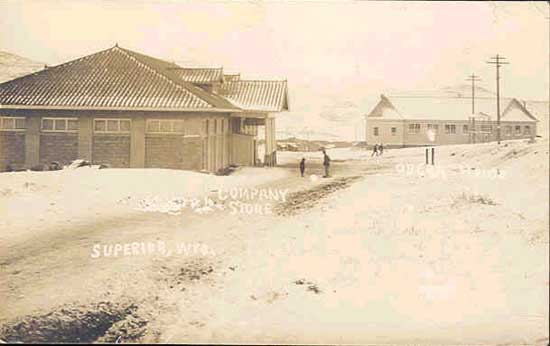
Superior Company Store, 1917. Opera House in the background.
The Company Store closed in 1954. The Opera House, built in 1909, was converted
to a roller skating rink in 1944 and burned down in January 1962.
Superior was a Company-owned town and all buildings and businesses were Company-owned. Independent businesses were
located in South Superior.
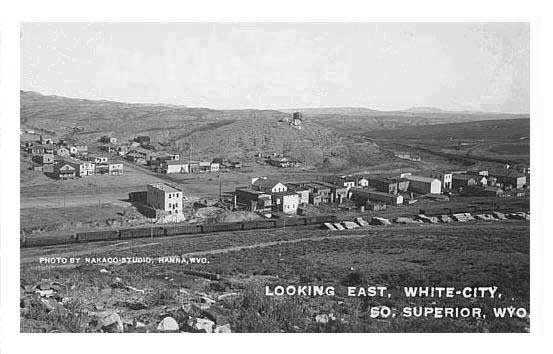
South Superior, 1910.
South Superior, originally known as "White City,"
also providing housing for miners working in independent mines, such as the Copenhagen Mine, just to the
north of South Superior. Copenhagen was owned by the Rock Springs Fuel Co. The mine operated
from 1918 to 1931. The tipple
caught fire and burned down in 1936. At the time, Superior was playing a football game against
Green River. The game stopped as the players and spectators watched helplessly. The fire engine would not start.
Miners working for the Union Pacific Coal Company would reside in Company owned houses built according to common models in different sizes. The
same plans would be used at the different Company-owned coal camps. See
plans for four-room house built at Cumberland below.
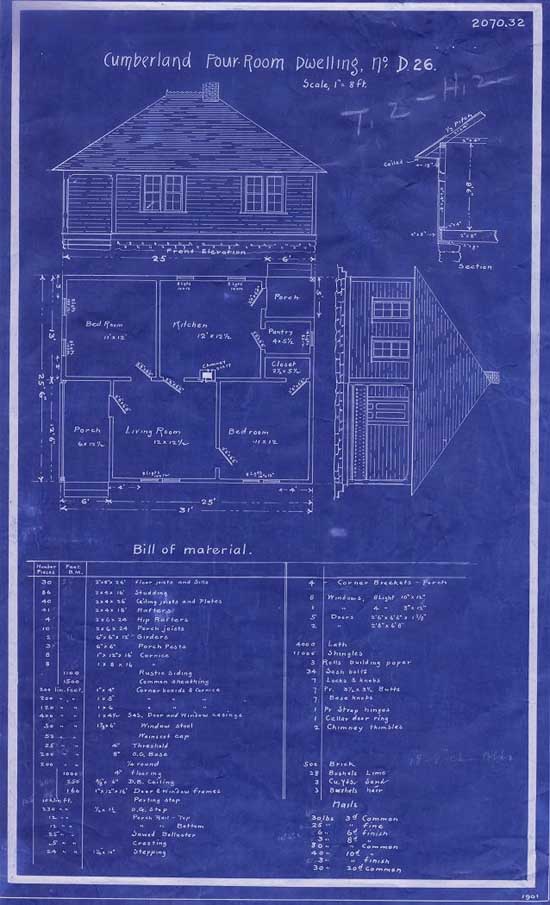
Plans for four-room house at Cumberland. Photo of blueprint courtesy of Anadarko Petroleum Corporation.
As will be observed from photos of the different coal camps on this and other pages and by examination of
the plans, the early houses lacked inside plumping or central heat. The houses were also notorious for
allowing the brown and black dust which characterized the coal camps to permeate through the structure. Later houses were better built
and had inside plumbing.
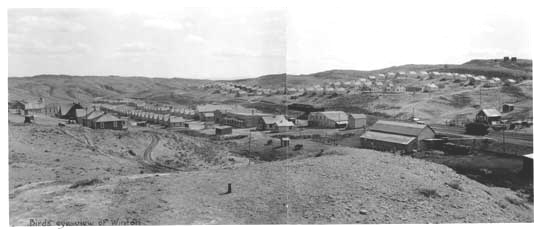
Winton, photo courtesy of Anadarko Petroleum Corporation
Winton, another Union Pacifc Coal Company Camp, was located 14 miles north of
Rock Springs and about 9 miles from Superior. Its mines operated from 1921 to 1951.
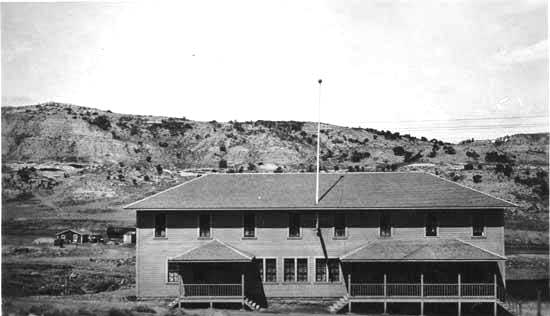
Company Boarding House, Superior. Photo courtesy of Anadarko Petroleum Corporation.
Bachelors would typically reside in a Company owned boarding house. The boarding house had a dining room and living room
downstairs and individual rooms upstairs. Next door to the boarding house was an
amusement hall in which had a pool table and in which beer was available.
Next page: Coal Camps continued.
|